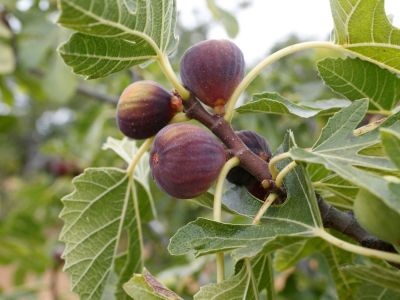When to Fertilize Figs
The first thing you need to know is what to feed fig trees. A general-purpose fertilizer with an analysis of 8-8-8 or 10-10-10 is fine. It’s easy to overdo it with stronger fertilizers. It’s best to provide fertilizer for fig trees only when the tree shows symptoms of slow growth or pale leaves, but there are a couple of exceptions where fig trees need regular feedings. Nutrients leach out of sandy soils quickly, so you’ll probably need to fertilize annually if the tree grows in a sandy location. You’ll also need to fertilize fig trees that are surrounded by other plants that compete for nutrients. You also need to know when to fertilize figs. It’s best to split the feeding over several months so the tree doesn’t get too much nitrogen at one time. Feed one and two year old trees an ounce of fertilizer a month, beginning when the tree starts to put on new leaves and stopping before the end of July. Give older trees one-third pound of fertilizer per foot (31 cm.) of bush height three times a year in late winter, midspring, and midsummer.
How to Fertilize Fig Trees
If the fruit doesn’t ripen properly, you may be over fertilizing. Reduce the amount of fertilizer to see if the problem resolves. Drought is another possible cause of immature fruit that doesn’t ripen. Make sure the tree gets an inch (2.5 cm.) of water a week, either as rain or irrigation, so you can rule out drought as the cause of the problem. Spread the fertilizer over the tree’s root zone, which is just beyond the reach of the canopy. Leave a space of at least a foot (31 cm.) between the base of the tree and the fertilizer. Most of the feeder roots are around the tree’s drip zone, so use most of the fertilizer in this area. Water the fertilizer into the soil slowly so that it doesn’t wash away. Now that you know more about fertilizer for fig trees, growing the healthy fruit should be no problem at all.
